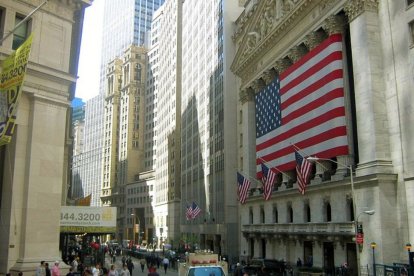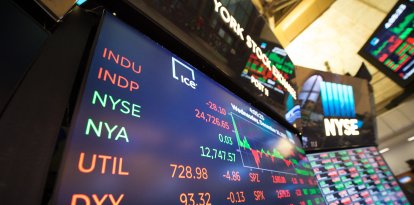Financial milestone: the Dow Jones surpassed 37,000 points for the first time in history
The stock index reacted favorably to the announcements of the Federal Reserve (FED), which predicted that interest rate increases could end in 2024.

Wikimedia Commons
The Dow Jones hit an all-time high on Wednesday, surpassing 37,000 points for the first time in history. The number was reached after the Federal Reserve (FED) announced that it will keep interest rates stable while leaving the door open to cut them by 2024.
The stock index closed at 37,090 points, marking an increase of 1.4%, at the same time that the FED announced that interest rate increases could be coming to an end in the near future.
Jerome Powell, Chairman of the Federal Reserve, recently indicated, "Inflation has eased from its highs, and this has come without a significant increase in unemployment. That's very good news. But inflation is still too high," the official added.
On Wednesday, the Federal Reserve kept its reference interest rate between 5.25% and 5.5% for the third consecutive meeting.
What is the Dow Jones?
The Dow Jones is part of the family of stock market indices, in other words, numbers that bring together the share prices of the leading companies in a given sector. The index number in question will represent the average value of the shares of the companies it groups together. In this case, it is the stock index of the 30 industrial companies with the highest capitalization of the New York Stock Exchange (NYSE).
Therefore, if the index rises, as was the case, the companies comprising it are experiencing profits. Why is it important? Because Dow Jones groups together the country's most important companies, an increase implies that the leading industrial companies are evolving favorably.
So, if the majority of values that make up the Dow Jones index fall on the stock market, it is normal for the index to fall. On the contrary, if the majority of stocks rise, the index is likely to increase. However, since it is a weighted index, not all components have the same weight when composing the final number. For example, if a company represents 5% of the Dow Jones, its rise or fall will affect the price of a company whose representation is 1% more.
RECOMMENDATION





















